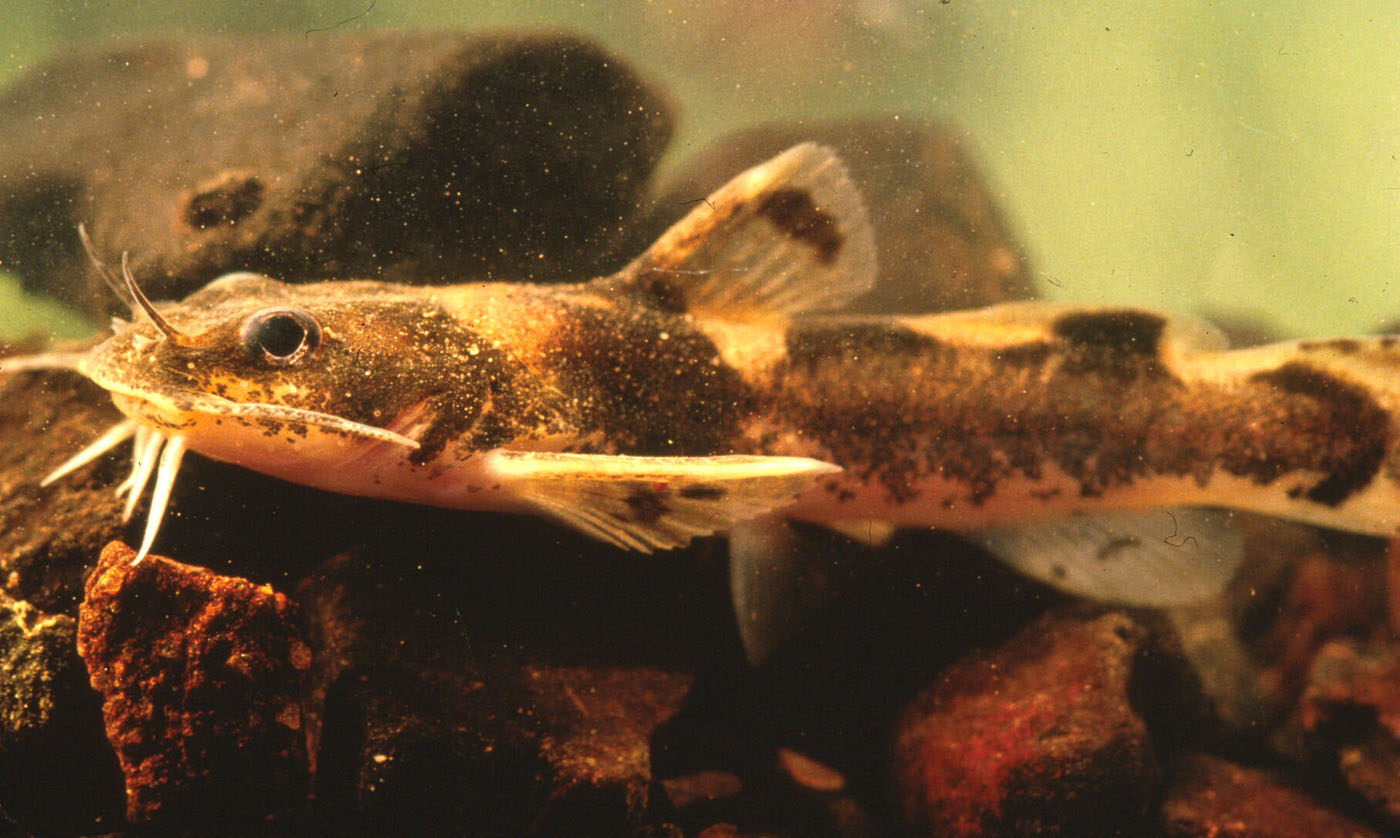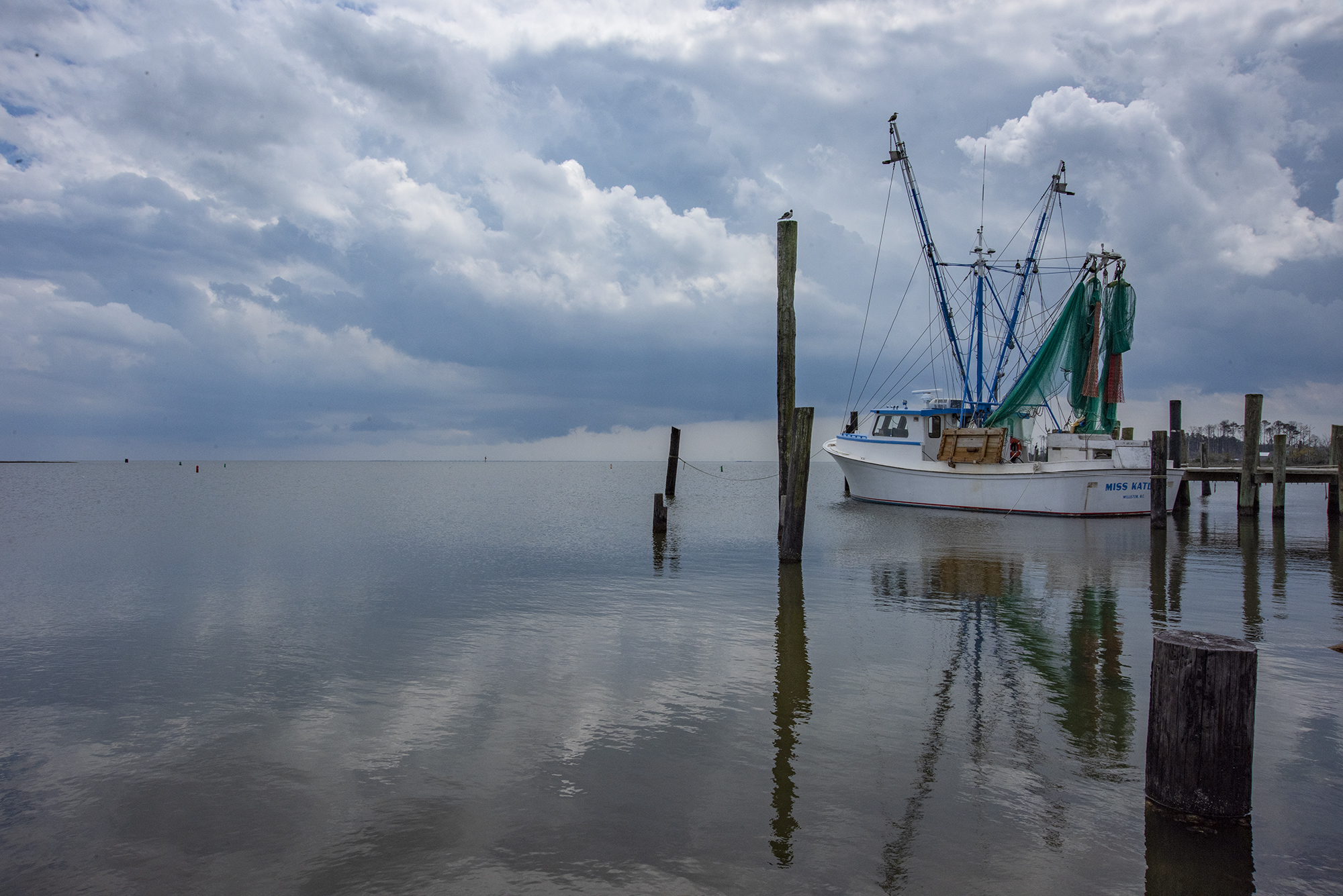
In the interest of helping two rarely seen aquatic creatures carry on, in Rachel Carson’s words, “their struggle for earthly survival,” a nonprofit conservation group is circling back around in a second attempt to force their protection in eastern North Carolina river basins.
The Center for Biological Diversity on Dec. 1 filed a lawsuit against the U.S. Fish and Wildlife Service for failing to take steps required under the Endangered Species Act to conserve the Carolina madtom, a small catfish with venomous spines found in the Tar River basin, and the Neuse River waterdog, a salamander with feathery red gills that lives in the Neuse and Tar river basins.
Supporter Spotlight
Perrin de Jong, an Asheville-based staff attorney at the center, said in an interview that the initial lawsuit against Fish and Wildlife was filed in April 2018 to compel the agency to meet its own listing deadline so both species would be protected under the Endangered Species Act, or ESA. In response, he said, the Wildlife Service issued a proposed rule in May 2019 to list the madtom as endangered and the waterdog as threatened. In addition, 995 stream miles were proposed as critical habitat for both species, which are native to North Carolina.
At that point, nine years had already passed since the center had first petitioned the agency for the two species’ listing under the ESA.
With the apparent progress on the rule, the center dropped the lawsuit, de Jong said. But the one-year deadline for the final decision came and went, and the agency was not coming through.
“It was just like pulling teeth,” he said.
When the center responded by filing a notice to sue on July 22, Fish and Wildlife on July 30 “restarted the clock,” de Jong said, by issuing a revised rule that added more stream miles to the proposed rule.
Supporter Spotlight

In a letter responding to the center’s notice from Gina Shultz, the agency’s deputy assistant director for Ecological Services, she explained that the revised rule was spurred by new information about the waterdog discovered during the comment period.
Meanwhile, de Jong said, there was no time to waste getting the protection for the species, which the center says have been severely imperiled by increased development and water quality concerns created by logging and factory farming.
In the most recent lawsuit, filed in the U.S. District Court for the Eastern District of North Carolina, the center contends that Fish and Wildlife unlawfully failed to make the final listing and critical habitat determinations for the madtom and the waterdog in a timely manner.
“To remedy these violations,” the lawsuit said, “the Center seeks an order declaring that Defendants are in violation of the ESA and directing Defendants to make, by a Court-ordered deadline, the overdue determinations of whether the madtom and waterdog must be protected under the ESA. Enforcement of the nondiscretionary deadlines of the ESA is necessary to ensure the survival and recovery of these species in the wild.”
In its information about the proposed rule on its website, Fish and Wildlife acknowledges that the madtom and the waterdog populations have lost much of their historical ranges and “are unhealthy and are at risk of extinction.”
“These river-dwelling animals are part of the state’s rich biological heritage and are important indicator species for clean water and healthy streams,” the site said.
There was also assurance that the required designation for critical habitat — areas essential to conservation of the species — would not affect private property rights or uses, except when action on the lands involve federal permits or funds.
Among public comments received about the rule, many were concerned that the proposal would require unreasonable restrictions that go beyond the state’s best management practices, or BMPs, for water quality, and would unfairly impact forestry industries and landowners who have been good stewards of the land.
“Requiring additional regulatory compliance beyond BMPs is not supported by the best available scientific information,” wrote Mike Ballinger, a registered forester living in North Carolina. “More than ever before, forest landowners are working to conserve rare species, to keep new species off the list, and to achieve conservation goals on working lands.”
But other commenters saw the value of taking measures to help the creatures survive.
“These two species and their headwaters are very rapidly changing and growing and additional protections to these species should not only have a positive effect on them, but also on the species and rivers that share ecosystems with them,” wrote Kyle Obermiller of Raleigh.
“Over the past decade, the Neuse River especially has been degrading in quality with pollution and sedimentation,” he continued. “Any additional protections and potential funding of conservation and restoration that may come with this ruling will be well spent.”
Two recent scientific studies found that funding deficits, lawsuits and political controversy have contributed to prolonged delays in securing protection for threatened and endangered species.
According to the center’s 2019 report, “Extinction and the U.S. Endangered Species Act,” at least 47 identified at-risk species had gone extinct before reaching the front of the line. A peer-reviewed study released in 2016, “Taxa, petitioning agency, and lawsuits affect time spent awaiting listing under the US Endangered Species Act,” found that species waited a median of 12.1 years to be protected under the ESA, with plants and invertebrates waiting the longest.
“These process times exceed ESA deadlines, which are two years when initiated from a third party; this may perpetuate population declines and hinder recovery efforts,” the study’s abstract said.
Although precise population numbers of the Neuse River waterdog and the Carolina madtom, which survive only in the two Eastern North Carolina river basins, are not known, mostly because of the swampy nature of their remote habitat and their shy lifestyles, biologists see the odd little creatures deserving protection as important members of a fragile coastal plain ecosystem.
Few Americans would argue with the wisdom of the ESA being required to save the bald eagle, the brown pelican and California condor from extinction. But the success of the ESA, passed in 1973, is rooted not in picking winners, but in recognition of the interconnection and interdependence of all species.
“They all matter, inherently,” said Kieran Suckling, the center’s co-founder and executive director, and one of the authors of the center’s ESA report. “It’s not for humans to make that decision.”
To that point, the complicated and prolonged effort to save even seemingly inconsequential critters like the madtom and waterdog protects not just those endangered species, he said. In the process, their habitat is protected. By extension, hundreds of other species dependent on that same habitat also gain protection, which in turn results in a healthier ecosystem. In the big picture, that translates to cleaner water and less pollution.
“Also, we’re creating a broader sense of community and belonging,” Suckling added. “One of the interesting things about the Endangered Species Act is it promises protection of the full array of species. It’s extremely broad and that’s because it recognizes that the balance of nature has a place to all of these species.”
Worsening climate change impacts — extreme heat, rainstorms, wildfires, droughts, storms — have sparked much more concern among the public about the environment. But reports about rapid decreases in the numbers and variety of birds, bees and trees has also received much publicity that has brought more attention to the contribution of the ESA to that balance.
With the recent trend favoring deregulation, however, the ESA has been targeted by critics who contend that listed species are not surviving despite government intervention. They also argue that the law tramples on public access to public lands and restricts private property rights.
As far as quantifying the survival of listed species, Suckling said, it’s complicated. A number of listed species became extinct or possibly extinct before the protections were put in place. And a number of others have gone extinct while waiting to be listed.
According to the center’s report, four listed species are known to have gone extinct, and 22 under protection may have gone extinct. Of the 39 listed species that have recovered, 23 of them bounced back in the last decade. All told, more than 99% of species under the protection of the ESA have been saved, a total of about 291 species.
Much of the conflict over the law is based on rumors and misinformation, “from Wyoming to North Carolina,” Suckling said. For example, he said, opponents of wolf recovery programs often say wolves deplete deer populations, but there is no shortage of deer in the U.S. On the contrary, he said, predators are key to a healthy, balanced ecosystem.
The answer to red wolf recovery, he advised, is to allow different wild populations to live in more recovery areas in the Southeast. With the sole wild population in northeastern North Carolina critically endangered, rather than artificially keeping the population small and contained in small areas, he said, the red wolves would greatly benefit from multiple locations so it could adapt more freely to conditions.
“It’s just like a good investor does not put all your money in one stock,” he said.
The same concept can apply with other species, especially in light of the episodic extreme events created by climate change. With massive flooding or wildfire, a species has no time to adapt. In order to survive, flexibility is the answer.
And the ESA, Suckling said, affords that flexibility in management. But it will take the support of the public and increased resources to head off a looming crisis.
“The mass extinction crisis, I think, is the greatest threat and challenge of our time,” Suckling said. “It’s been going on for hundreds of years and it’s going to take a lot to turn it around. Where we’ve set our minds, we can stop it. The bottom line is we’re not going to solve the extinction crisis tomorrow, but we do know how to do it.”
Part of the equation, de Jong said, is for conservation groups like the Center for Biological Diversity, armed with the power of “citizen suit statutes” to the keep the legal pressure on the government to meet the statutory deadlines and requirements in management plans that protect threatened and endangered species like the madtom and the riverdog.
“That’s what we’re here for,” he said. “That’s the brutal reality of American democracy as it really works. The horrible truth of the matter is that we are the only thing that keeps these regulatory laws in place.”







